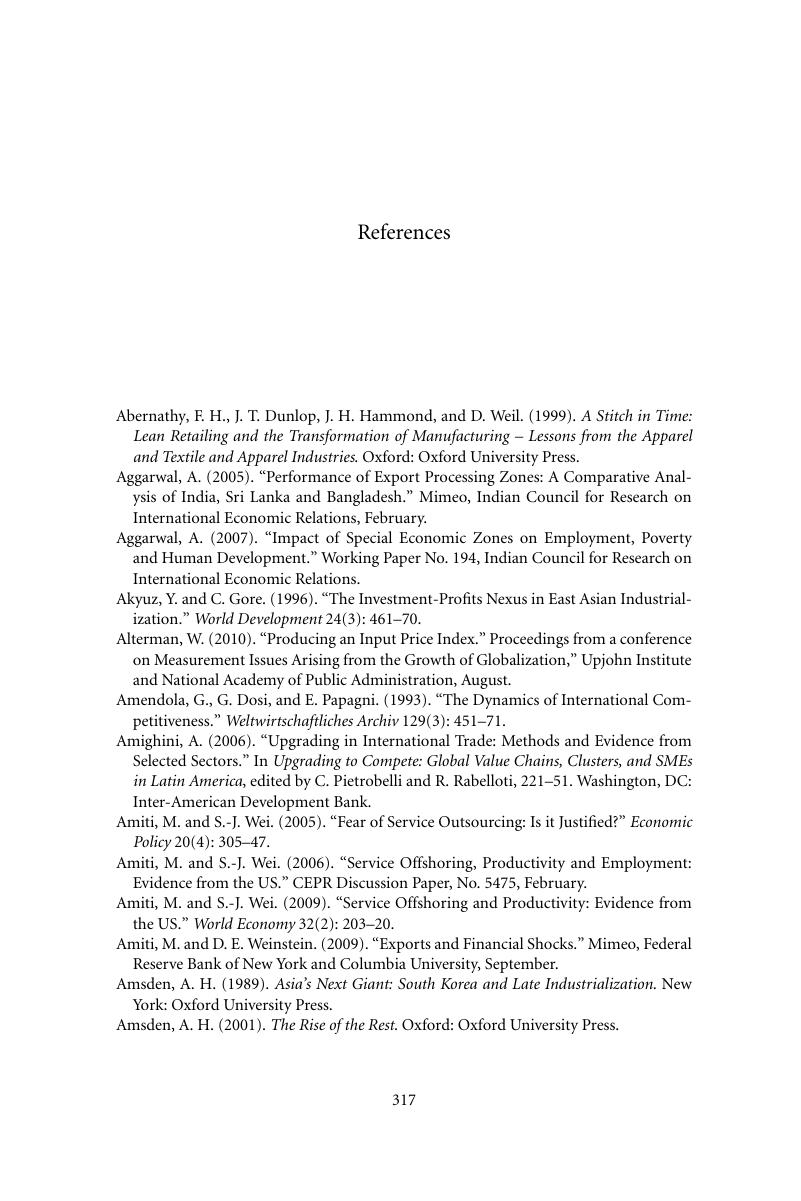Book contents
- Frontmatter
- Contents
- List of Figures
- List of Tables
- List of Appendices
- List of Variables
- List of Abbreviations
- Acknowledgments
- 1 Introduction
- 2 The New Wave of Globalization
- 3 What Role for Comparative Advantage?
- 4 Lead Firm Strategy and Global Value Chain Structure
- 5 Economic Insecurity in the New Wave of Globalization
- 6 Financialization and the Dynamics of Offshoring
- 7 Economic Development as Industrial Upgrading in Global Value Chains
- 8 Outsourcing Economics
- References
- Index
- References
References
Published online by Cambridge University Press: 05 April 2013
- Frontmatter
- Contents
- List of Figures
- List of Tables
- List of Appendices
- List of Variables
- List of Abbreviations
- Acknowledgments
- 1 Introduction
- 2 The New Wave of Globalization
- 3 What Role for Comparative Advantage?
- 4 Lead Firm Strategy and Global Value Chain Structure
- 5 Economic Insecurity in the New Wave of Globalization
- 6 Financialization and the Dynamics of Offshoring
- 7 Economic Development as Industrial Upgrading in Global Value Chains
- 8 Outsourcing Economics
- References
- Index
- References
Summary

- Type
- Chapter
- Information
- Outsourcing EconomicsGlobal Value Chains in Capitalist Development, pp. 317 - 344Publisher: Cambridge University PressPrint publication year: 2013



